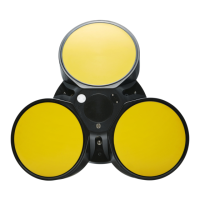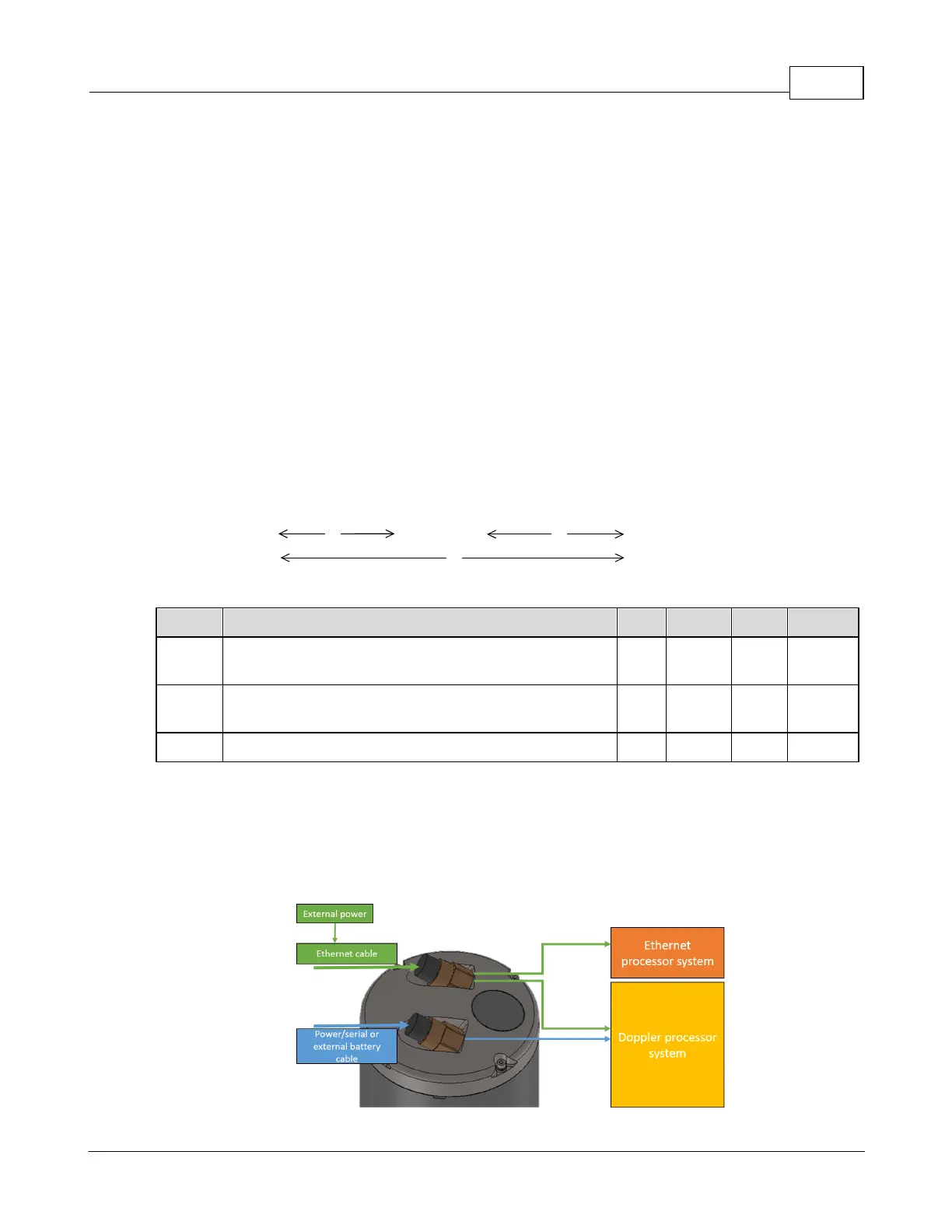Basic interface concept 7
© 2017 Nortek AS
timeout value in Confirmation and Data Retrieval modes is 60 seconds. There is also a timeout in
Command Mode when operating over the serial interface. If no commands are received for 5
minutes, a break or a sequence of @@@@@@ must be sent to wake up the processor.
2.2 Break
<BREAK> over the serial RS232/RS422 interface is defined as:
@@@@@@ <delay 100 milliseconds> K1W%!Q <delay 300 milliseconds> K1W%!Q
The @@@@@@ are used to wake up the processor when it is in sleep mode since the instrument
will only be able to monitor activity on the serial line when it sleeps. The second sequence of the
actual break characters is there to ensure that a break is detected even when the instrument is
waking up due to some other cause (e.g. alarm from the real time clock). This ensures that the
processor will interpret the following command correctly.
The figure and the table below show the specified timing of the BREAK sequence:
Time from end of @-sequence to start of first K1W%!Q-
sequence.
Time from end of @-sequence to start of second K1W%!
Q-sequence.
Time between first and second K1W%!Q-sequence.
2.3 Dual Processor
The AD2CP uses a two-processor (DSP) design; one dedicated to Doppler processing (BBP) and the
other to Interface (SEC). The primary interface is Ethernet, so the Interface processor is only powered
when external power is applied. Note that powering through the Ethernet cable will also power the rest of
the electronics.
Figure: Power distribution relating to the two-processor design.

